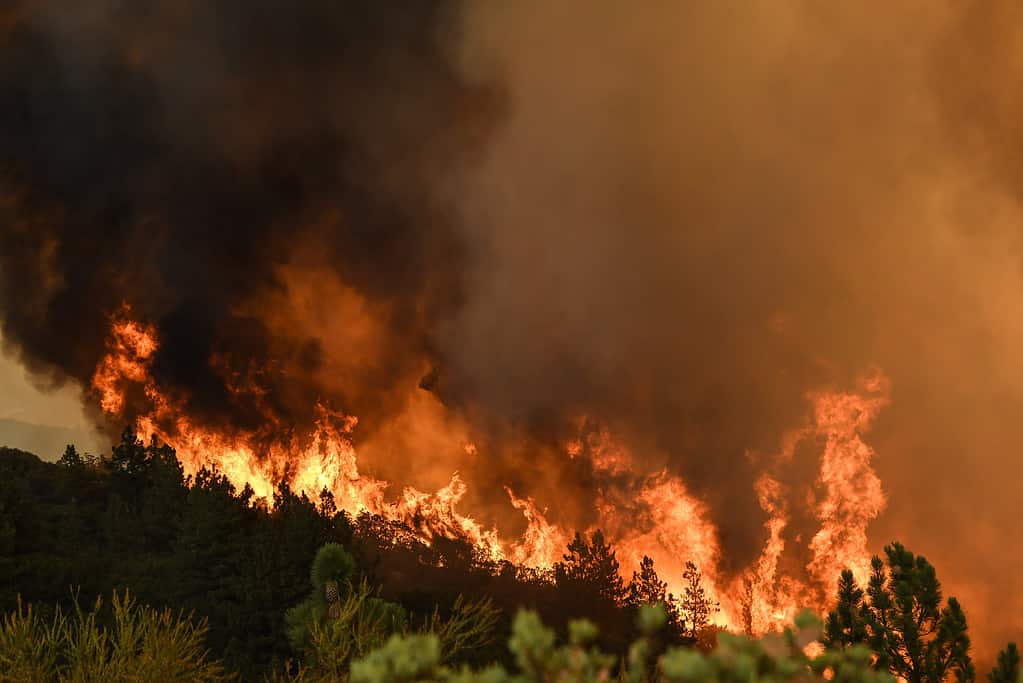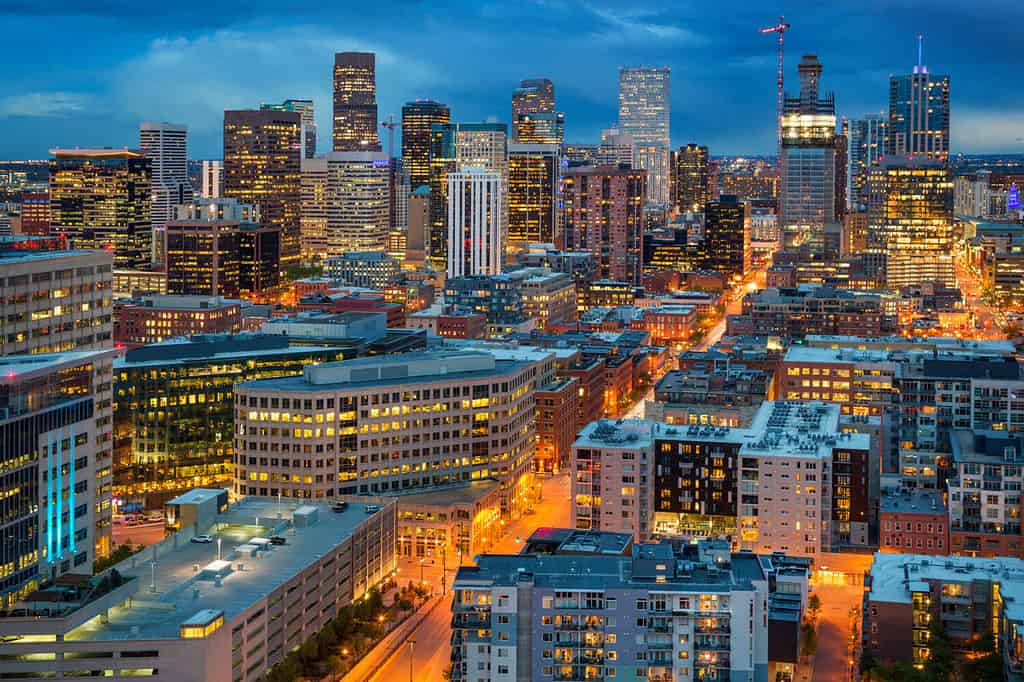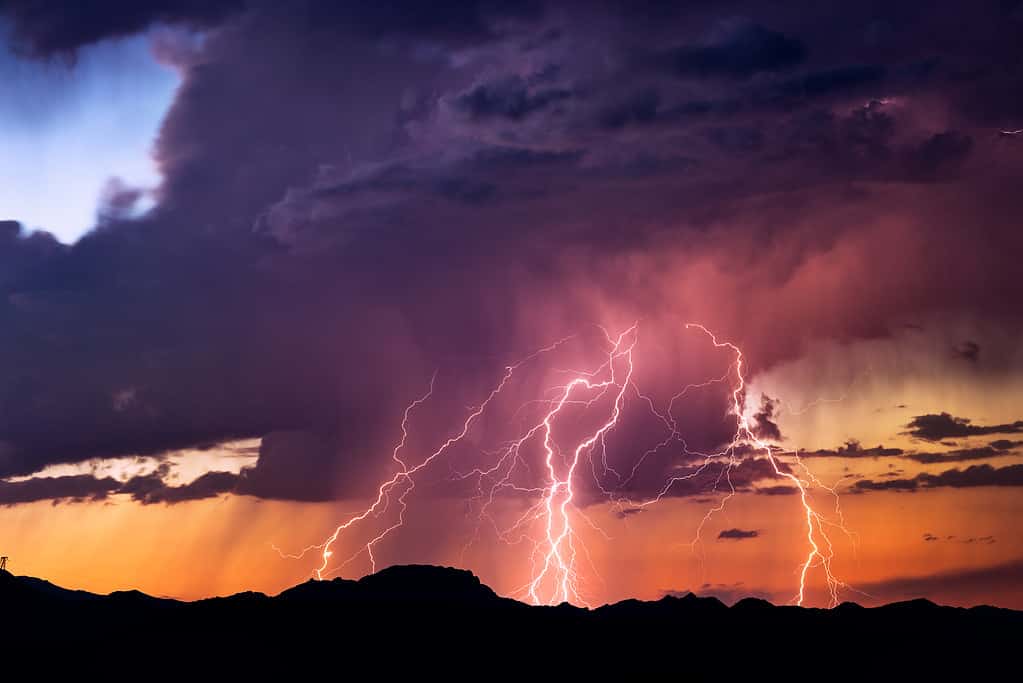Like many western states, Colorado is known for its wildfire risks. In fact, each year in Colorado, there may be several wildfires to occur. Normally, these are small and easily contained by authorities. However, in some rare and more severe instances, these can become catastrophic events that ravish the landscape of the state. The 2020 Cameron Peak Fire, for example, consumed 208,663 acres, making it the largest of all wildfires in Colorado state history.
Below, learn more about wildfires in Colorado, including peak season and areas that sport the highest risk. Plus, learn more about the causes of wildfires and the exact risks they pose in Colorado.
Colorado Fire Season

Wildfires can occur at any time of the year in Colorado.
©Cy Phenice/iStock via Getty Images
Natural wildfires occur most often in Colorado during the warmer months of the year. This is because of the overall dry, hot climate that can be common throughout much of the state. When lightning strikes or small fires are left unattended, they have a higher chance of sparking into dangerous wildfires.
With that being said, however, the risk of wildfires during the colder months is not nonexistent. Although the risk is reduced more so than in the summer months, winter still poses a risk for wildfires throughout the state of Colorado.
Areas with the Highest Risk of Wildfires in Colorado

The Denver metro area has one of the highest wildfire risks in the state.
©Neil Podoll/Shutterstock.com
Much of the central and western regions of Colorado face similar fire risks. Oftentimes, many people believe that wildfires and regions with the highest risk of wildfires only occur in rural areas. However, in the state of Colorado, this is not true. In fact, the most condensed area with an increased risk of wildfires occurring year-round is the Denver metropolitan area. This also includes the surrounding area, with cities such as Boulder, Gilpin, and Clear Creek also falling into the increased risk zone.
Most of the time, cities are at a reduced risk of experiencing wildfires because of the lack of greenery and forested areas. While building fires may spread rapidly in these conditions, there is typically little room for a wildfire to begin, whether naturally or when caused by humans. However, Denver and the surrounding areas are unique because these cities often have a high focus on the natural landscape. There are several wildlife parks and other dense vegetative sites within close proximity to Denver, allowing wildfires to occur and spread more readily when conditions are right.
What are Some of the Main Causes of Wildfires in Colorado?

Lightening bolts are one of the leading causes of fires.
©mdesigner125/iStock via Getty Images
There are several different potential causes for a wildfire in Colorado, depending on the region and ecosystem.
In the forests of Colorado, lightning is one of the most common causes of a forest fire. In fact, according to the National Weather Service, around 50 percent of all forest fires that occur in the state of Colorado are caused by lightning. Lightning also serves as a high-ranking cause among various different ecosystems, including grasslands.
Lightning isn’t the only severe weather condition that can lead to wildfires, however. Droughts can also be another major factor due to the dry conditions they produce.
These are some of the most notable natural causes of wildfires in Colorado. However, it is important to note that humans also play a large role in beginning wildfires. Some of the largest wildfires in the state’s history have been caused by humans. In these instances, wildfires are typically caused by a lack of or improper fire safety. For example, not fully extinguishing a fire before you leave a campsite. What was once a small fire can be turned into a raging wildfire quickly when paired with the right conditions.
Many times, the exact cause of a wildfire may go unknown. However, when there has been a lack of lightning in the area, most authorities in the state of Colorado lead to human activity as the source of the blaze.
What Risks Do Wildfires Pose?
There are many risks that wildfires pose, some that may not be as obvious as others.
One of the most notable risks of wildfires is damage to your person or belongings. Wildfires can be dangerous, especially when they spread to homes and towns. While someone may be able to thankfully evacuate without any injuries, there is a risk that their home may be damaged by the flames.
The smoke and debris can also greatly reduce air quality. This can be especially harmful over a long period of time, as poor air quality can introduce a variety of pollutants into your lungs. Such threats can be even greater for individuals who already suffer from respiratory problems, such as asthma.
The photo featured at the top of this post is © Christian Roberts-Olsen/Shutterstock.com
Thank you for reading! Have some feedback for us? Contact the AZ Animals editorial team.







